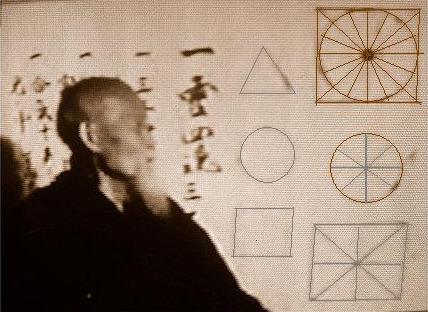
Morihei Ueshiba Lectures
Ichirei Shikon Sangen Hachiriki / 一霊四魂三元八力
In “Kiichi Hogen and the Secret of Aikido” we traced a connection between what Aikido Founder Morihei Ueshiba cites as one of the “Secrets” of Aikido and Chinese military strategy. In “Morihei Ueshiba, Budo and Kamae” we traced a connection between a section of the technical manual “Budo”, published in 1938 by Morihei Ueshiba, and certain very common concepts in Chinese martial arts.
Of course, there’s more, a lot more, threaded all through Morihei Ueshiba’s lectures and essays. Once the connections are laid out I think that this will become clear – even obvious. What will also become clear is the training methodology being laid out, in no uncertain terms, by the Founder.
For a start, Morihei Ueshiba would often say that “Ichirei Shikon Sangen Hachiriki” (“One Spirit, Four Souls, Three Origins, Eight Powers”) represented the basic structure of the Universe, and the basic structure of Aikido.
At the top of this post is a screenshot from a video showing Morihei Ueshiba lecturing on this very concept – you can see “Ichirei Shikon Sangen Hachiriki” (一霊四魂三元八力) written on the board behind him. The diagrams are important too, but I’ll talk about them in a future essay.
Here’s one of the things that Morihei Ueshiba said about “Ichirei Shikon Sangen Hachiriki”:
「合気道とは和合の道であり、即ち一霊四魂三元八力の生ける姿、宇宙経綸の姿、即ち高天原の姿である」
“Aikido is the way of harmony, that is to say the living form of Ichirei Shikon Sangen Hachiriki, the form of the fabric of the universe, specifically the form of the High Plain of Heaven.”
The “High Plain of Heaven” (“Takamagahara”) is the place where the gods were born – Heaven, so to speak. In this case Ueshiba is saying that Ichirei Shikon Sangen Hachiriki is created within yourself, as in this quote from “Takemusu Aiki”, page 77:
タカマガハラも自分にあるのであります。天や地をさがしてもタカマガハラはありません。それが自己のうちにあることを悟ることであります。
“Takamagahara is within yourself. If you search for Takamagahara you will not find it on Heaven or Earth. That is when you will become enlightened to the fact that it exists within yourself.”
In other words, Aikido and Ichrei Shikon Sangen Hachiriki represent both the structure of the Universe and the structure of you yourself as an individual – or perhaps it would be more accurate to say, how you yourself should be constructed physically and mentally in order to attain an ideal state both martially and in life.
Quite a profound concept, if you can manage to wrap your head (and body) around it, I think, and a pretty neat package description of philosophical and technical Aikido.
The first section, “Ichirei Shikon” (“One Spirit, Four Souls”), is the structure of the spirit world. In Shinto cosmology humans possess one spirit and four souls – the turbulent (aramitama), the tranquil (nigimitama), the happy (sakimitama) and the wondrous (kushimitama). The “naohinomitama” is the one spirit that acts as kind of a container for the four souls.
Let’s leave that section aside for another day and concentrate right now on the physical structure of the Universe – and of Aikido technique, which also follows this pattern.
The second section, “Sangen Hachiriki” (“Three Origins, Eight Powers”), is the structure of the physical world, the physical self and the physical training methodology in Aikido.
The first part of that section is the “Sangen” (“Three Origins”), the three basic building blocks of the universe – heaven, earth and man, represented as hard, soft and flowing by the circle, triangle and the square (hence the name Aikido Sangenkai!).
Of course, everybody has seen the circle, triangle and square, but does Heaven-Earth-Man have anything to do with Aikido?
Morihei Ueshiba thought so:
合気道は天地人和合の道と理なり。
“Aikido is the Way and Principle of harmonizing Heaven, Earth and Man.”
Coincidentally (or maybe not so…), one also unifies the Ki from Heaven and Earth with that of Man to form the Taiji, the “Grand Ultimate” in Chinese internal martial arts.
This leads us to a telling quote from Koichi Tohei’s book “気の確立” (“The Establishment of Ki”). It comes in the section where he discusses his break from the Aikikai:
二代道主は、合氣道を「人の気に合わせるの道」と解釈していた。しかし私にしてみれば、合氣道とは「心身を統一して天地と一体になる。すなわち天地の気に合わす道」なのである。
“The second Doshu interpreted Aikido as “the Way of fitting in with another person’s Ki”. However, it seems to me that Aikido is “Uniting body and mind and becoming one with heaven and earth. Specifically, the Way of fitting together the Ki of heaven and earth.”.”
Note that Koichi Tohei’s model follows Morihei Ueshiba’s quoted model, and that he (correctly, in my opinion) states that the process occurs within oneself rather than between oneself and another person – see the quote from Ueshiba on “Takamagahara” above concerning that point.
Whether Tohei correctly represents Kisshomaru Ueshiba’s opinions or not (and the ramifications) we’ll leave for a seperate discussion.
In Chinese cosmology the Universe begins with the Void, represented by an empty circle, the Enso. The void divides into two, the “In” (“Yin”) and “Yo” (“Yang”) opposing powers.
The Enso is often seen in Aikido artwork as well – and Morihei Ueshiba also said that the Circle is the Void. Here is another interesting quotation from Ueshiba:
「合気というものは、初め円を描く。円を描くこと、つまり対象力。相手に指一本ふれないでも相手は跳んでしまう。この一つのものをつくりあげるにも十年ぐらいはかかる。これからは大飛躍をしよう。」
“In this thing called Aiki, first describe (draw) a circle. Drawing a circle is, in other words, opposing powers. Without touching with even one finger your opponent will be sent flying. Just to be able to do this one thing takes about 10 years. Let’s try to advance quickly.”
Opposing powers, “In” and “Yo”, echoes of the same story cited in “Aikido ™ – Can it really be trademarked?” and “Kiichi Hogen and the Secret of Aikido” – when Henry Kono ask O-Sensei “Why can we not do what you do, Sensei?” the answer was quite simply “Because you don’t understand In and Yo.” (from “Aikido Memoirs” by Alan Ruddock).
According to Chinese theories, when the circle (Wuji, the Void) divides in two and is joined by Man you get the “Grand Ultimate” – the basic “In” (“Yin”) and “Yo” (“Yang”) opposing forces divided/united by a curving line represented in the Taiji symbol – Heaven and Earth united/divided by Man.
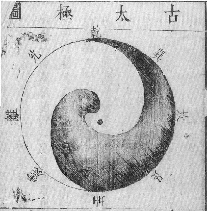
Diagram of Taiji by Zhang Huang 章潢 (1527-1608)
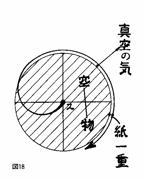
From “Aikido Shinzui” by Bansen Tanaka (1976)
Note the similarity of the above diagram to the first diagram of the Taiji by Zhang Huang. The above diagram appeared in a privately published work by Bansen Tanaka entitled “Aikido Shinzui” in 1976 (no relation to the later work published by the Aikikai). Bansen Tanaka was a pre-war student (from 1936) of Morihei Ueshiba, and continued to host Ueshiba on his frequent trips to Osaka after the war.
The Kanji at the top right read “The Void”. The Kanji on the bottom right read (“the thickness of a single piece of paper”). The Kanji in the right side of the diagram read “Emptiness” and “Matter” (i.e. “Heaven” and “Earth”).
In the center is the single Katakana character “Yu”, which in Kotodama terms stands for the harmony of Fire and Water (i.e. “In” and “Yo”). It has been pointed out that the character may also by “Su” (I blew it up, but I can’t tell in my scanned copy) – in Ueshiba’s cosmology “Su” pierces the void and moves to “U”, which manifests as the two “In” and “Yo” opposing forces.
See any similarities?
When you see the yin-yang symbol in China it is often surrounded by eight trigrams. These represent the “eight powers” of Chinese internal martial arts, which are the eight different ways that yin and yang interact to create power, or “jin”. This is so important in China that an entire internal martial art (Ba Gua) was actually named after it, and that Taiji was originally known as the “13 Postures” – 8 powers combined with 5 basic directions.
In Morihei Ueshiba’s structure of the Universe the “Hachiriki”, or 8 powers/forces, are an active force, a quiet force, a pulling force, a loosening force, a splitting force, a combining force, a melting force and a congealing force (you can see that each “in” force has a matching “yo” force).
八力は、対照力「動、静、解、凝、引、弛、合、分、」「9-1、8-2、7-3、6-4」をいいます。
“The 8 powers are opposing forces: Movement – Stillness, Melting – Congealing, Pulling – Loosening, Combining – Splitting / 9-1, 8-2, 7-3, 6-4”
You may recognize the numbers from “Kiichi Hogen and the Secret of Aikido“. There’s more on the eight opposing forces and the way that they relate that’s important to Aikido – but we’ll get into that another time.
So now we see that Morihei Ueshiba’s cosmology for the physical structure of the Universe is identical to the Chinese cosmology. Further, we see that Morihei Ueshiba’s structure for the physical manifestation of his art is identical to that used in the Chinese internal martial arts – right down to the terminology.
Here’s a last thought from Morihei Ueshiba:
「一霊四魂三元八力や呼吸、合気の理解なくして合気道を稽古しても合気道の本当の力は出てこないだろう。」
“I think that if you cannot understand Ichirei Shikon Sangen Hachiriki, breath (kokyu) and Aiki, then even if you practice Aikido the true power of Aikido will not come forth.”
Christopher Li – Honolulu, HI

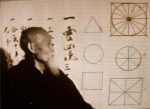
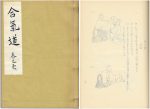
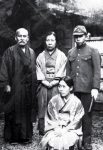
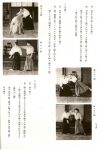
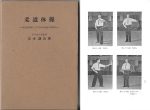
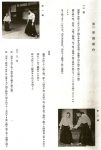
thank you again really enjoying your work
Thanks Richard – great to hear from you!
Best,
Chris
I’m curious about the quote relating the 8 powers with the pairs of numbers–I’ve seen each independently, but I haven’t seen the correlation before. Where’s that from?
Hi Hugh,
You can see in the article above that Morihei Ueshiba cited the numbers specifically:
There’s more about the numbers themselves and how it all relates in “Aikido without Peace or Harmony“.
Best,
Chris
Pen, Lu, Ji, An / Cai, Lie, Zou, Kao (not sure about the spellings) in Taichi? With the same corresponding numbers.
Wow, great article Chris. This makes me reconsider what we are studying in qigong. In the Fu Xi Bagua diagram this pattern of 9,1…8,2..7,3..6,4.. is pretty obvious as you move from (West to North)= (9,1) then (East to South)=(8,2) then (South to East)= (7,3) then (North to West)= (6,4). Can you recommend some books which go into further details about this relating to the Bagua?
Thanks – I’m not that knowledgeable about Bagua, but Tom Bisio has published some interesting books on Bagua and Chinese Internal Martial Arts.
Best,
Chris
From all the write-ups and research done by Chris, it seems that if you dig underneath, Aikido is a reinterpretation/rebranding of Taichi or some other Chinese internal art?
Forgot to add:
But of course Aikido having a different outward form.
Sort of. But I would put it this way – most Chinese arts work along basically similar models, which were actually imported from India. Morihei Ueshiba’s Aikido worked along those models as well – imported from India mostly through China (but sometimes by more direct routes).
Best,
Chris
You should read this book “The Shaolin Monastery: History, Religion, And The Chinese Martial Arts” (Univ of Hawaii Press 2008) by Meir Shahar, research scholar at Tel Aviv University.
https://www.goodreads.com/book/show/3008020-the-shaolin-monastery
http://libgen.is/book/index.php?md5=D2C46C03326E7EAB5E37D7CB79477D42
He writes at length about this in the book. There appears to be no evidence for this, and much is just folkore that grew around the origin and evolved as time passed. Other research also confirms Shahar.
Also, a lot of this comes from the attribution of the Yijin jing to Bodhidharma. But the evidence disproves the Bodhidharma attribution:
http://web.archive.org/web/20191203054639/https://en.wikipedia.org/wiki/Yijin_Jing
This all seems to make sense to me since if it came out of India, you would see something similar in India as well to this day. I’m not aware of any internal martial arts like this in India. Both India and China are old countries, but it wouldn’t make sense for China to be able to preserve these things while India didn’t. Especially since China also went through Communism, the famine, Great Leap, and Cultural Revolution, and there was a purging campaign that came out of that period (or at least attempts were made at purging).
Though I’m not an internal artist, I do TKD in fact, I’m acquainted with several Indians who train under Adam Mizner and Sergio Ladarola. Not sure why they wouldn’t train in an Indian art if it also exists in India.
Well, I’m familiar with that work but I’m not talking about the Bodhidharma mythology, not at all. We’ve traced the basic principles in a way that’s fairly evident – Dan Harden just held a comparative workshop on the subject, which is rather too large for this thread.
Best,
Chris
Hi Chris, I just wrote a book on aikido explaining what I think this all means in movement and psychological terms, using the latest sciences. I agree with you wholeheartedly. It is obvious that Ueshiba studied some aspects of Chinese cosmology and made them the basis of his art, or at least used them as aids to teaching whatever it was he was experiencing. I feel that with the right concepts we can get very close if not actually experience the same things, almost immediately. I hope to contact you again soon when the book is finally finished. I am working on the last chapter and would be grateful if you could take a look at it and if it suited you to review it before it is released. I don’t have all the answers but I feel that I have come very close to the heart of aikido.. By the way, I really appreciate your articles. I think they came to my attention just at the right time. I realized when I read this one and a few of the latest ones that I was on the right track. This gives me great hope that I haven’t been wasting my last two years, thinking it through on my own, basing my ideas on my own research and personal experience, mainly derived from full-time ‘silent’ training over 14 years. People often don’t give much thought to it, but if Malcolm Gladwell is right, then it does take about 10,000 hours of practice before ‘the field’ of whatever complex discipline one wishes to master becomes clear. Between 3 to 5 hours per day was my routine for many years. When people tell me they have 15 years experience, this translates into about 1 year and four months of full-time training. But, I feel very shy about saying I have 100 years of training behind me. Then again, more recently I thought it might be a useful marketing gimmick to get people’s interest peaked. What’s more interesting to me is the ‘faith’ in the system of dan-grades that seems to blind most people from attending seminars by experienced people like myself whose dan ranking is minimal. Cheers 🙂
Hi Keni,
Congratulations, it’s always great to see people working on trying to untangle these things! I’d love to take a look at what you have.
Best,
Chris
Thank you very much for posting and interpreting O’Sensei’s teachings in your blog. I’m just writing with a quick comment in defense of Second Doshu Kishomaru against the apparent slander by the great Tohei Koichi. I never practiced with him nor heard him speak, but in his book “The Spirit of Aikido” (1984) Ueshiba Kishomaru clearly and repeatedly described the ultimate goal of aikido training as unification of the individual ki with the ki of the universe, not as harmonizing with an opponent. Indeed the first chapter is called “The Ki of the universe and Individual Ki.” On page 15 he summarizes his father’s single ultimate goal as unifying universal and individual ki. On pages 24-25 he quotes his father extensively discussing “the essense of ai-ki” in terms of oneness with the universe rather than harmonizing with another person. Again on page 75 his own summary and another summary from O’Sensei refer to “mutual echoing of the resonance of the body with the resonance of the universe,” not blending with an opponent. Moreover, on page 78 he quotes the Founder warning against being “too conscious of the other…because in reality there is no opponent” before another quote that “true breathing means to breath[e] in unison with the universe.” So might it have been someone other than Second Doshu who started the idea that aikido is about blending with an opponent? Did O’Sensei himself ever talk about “ki musubi” as harmonizing with the ki of another person–or not?
Hi Mike,
Thank you for your thoughts. Actually, I don’t have an English copy of “The Spirit of Aikido”, but from what I remember (and with a few quick glances through to refresh my memory) from the Japanese version I believe that you’re generally correct (although he does make some comments about matching yin to yang of another person later on in the text, I believe). I don’t have any personal recollection of hearing Kisshomaru Doshu commenting on this verbally while I was around, so I can’t really comment except for that. On the other hand – the model of “harmonizing with the other person” (which I don’t believe that Morihei Ueshiba really advocated either) is pervasive in modern Aikikai Aikido, so it seems to have come from somewhere (or at least, it was not corrected from the top).
In any case, I think there were probably quite a few other issues that they disagreed upon that didn’t get mentioned in that particular comment. 🙂
Best,
Chris
Thanks Chris!
You’re welcome Michael!
Best,
Chris
I wanted to ask about the concept of, Devine spirit in eight directions. its meaning and origin.
thank you
Hi Burke,
In what context?
Best,
Chris
Hi Chris,
Does this tie in with the 43 kami O Sensei installed in the Aiki Jinja in Iwama?
Thank you
Hi Bjorn,
I believe so, yes, but that gets more complicated…
Best,
Chris
Do you have any links I can explore please?
Well, there’s a little bit here…
https://www.aikidosangenkai.org/blog/three-doka-aiki-o-kami/
Best,
Chris
Can you provide a video or transcript of the comparative workshop for a fee? I’d like to learn. Also, I can’t seem to reply to your last comment on that thread of ours.
I’m sorry, but there’s no public video. This kind of thing is best demonstrated hands on.
Best,
Chris
In this article there is made an unjust, incorrect, and may I say, unfair assumption with regards to Kisshomaru Ueshiba.
Kisshomaru is accused of misrepresenting Aiki and bluntly ended with a “well leave that for a seperate discussion.” Until now there has been no such discussion, so it is only fair to pick it up here and now.
Tohei states that :
“The second Doshu interpreted Aikido as “the Way of fitting in with another person’s Ki”.
And he continues :
“However, it seems to me that Aikido is “Uniting body and mind and becoming one with heaven and earth. Specifically, the Way of fitting together the Ki of heaven and earth.”
And the author of this article continues :
“Note that Koichi Tohei’s model follows Morihei Ueshiba’s quoted model, and that he (correctly, in my opinion) states that the process occurs within oneself rather than between oneself and another person – see the quote from Ueshiba on “Takamagahara” above concerning that point.”
I say that both Kisshomaru nor Morihei stated it as simplistic and divided as stated above. Uniting Ki has to be done both with the Universe, internal, as well as with your training partner. According to the situation. In an ordinary class one doesnt instruct the students to “unite your ki with the universe!”. More practical instruction like “dont push or use force but harmonise with your partner.” is good instruction.
“Interview with Aikido Shihan Sgigenobu Okumura.” from the Sangenkai website.
Shigenobu Okumura talking about Morihei Ueshiba : “His thinking was “Aiki is training in becoming one with your partner.”
The Art of Aikido, by Kisshomaru Ueshiba.
“Wago. (Harmony)
Harmony in Aikido means both to connect oneself to the cosmos (the universal) and to blend with a partner (the particular)”
There is even a whole chapter “the process of unification with the universe”… on how to unite the human ki with the universal ki.
In other books like THE SPIRIT OF AIKIDO Kisshomaru is similar about his explanations about uniting Ki with the Universe, and uniting body, mind and spirit through Ki.
But again, yes of course, in normal training one instruct the students to “harmonise with your partner”. (e.g. dont push, dont pull, etc.)
Lastly, Time is a great master. Where is Tohei now? What is his legacy? Mr Tohei simply quit Aikido after a while after his seperation from the Aikikai. Was it because he found his shiny toy too boring after a while? We only can be grateful that Tohei was not chosen to lead the Aikikai organisation, but a more modest person who turned out to be a faithful and caring leader and guardian of Aikido.
I also have direct statements, in the original Japanese, from Morihei Ueshiba specifically stating that Aiki is NOT harmonizing with the opponent. But it’s a big subject. Honestly, the easiest way to grasp the concept is to get hands on with someone who can show you this firsthand, the difference, IME, is quite profound.